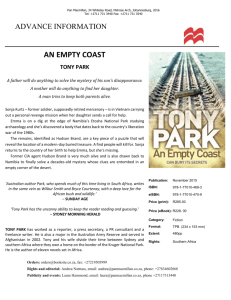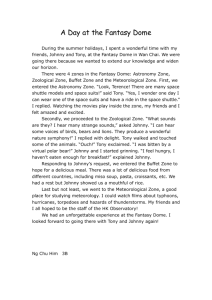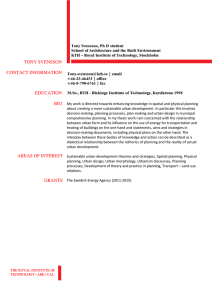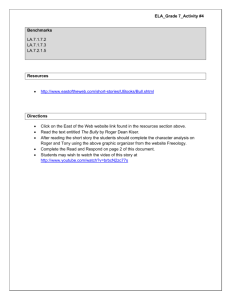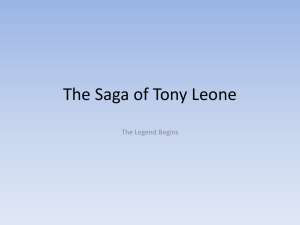Tony the Turtle - Invasive Species 101
advertisement
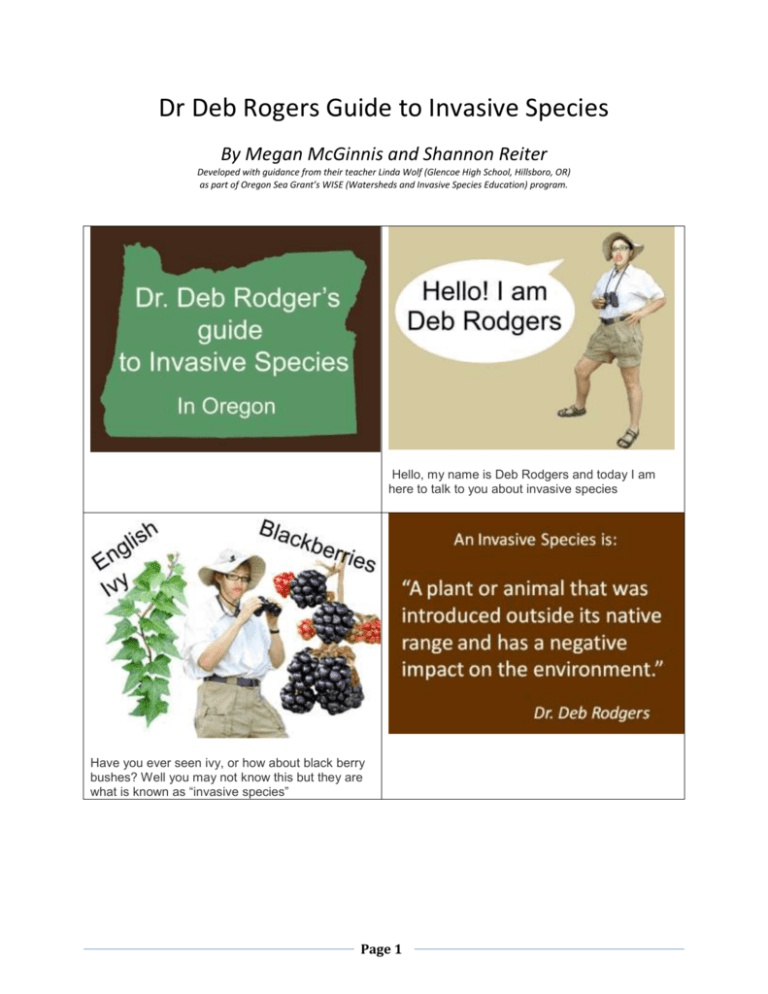
Dr Deb Rogers Guide to Invasive Species By Megan McGinnis and Shannon Reiter Developed with guidance from their teacher Linda Wolf (Glencoe High School, Hillsboro, OR) as part of Oregon Sea Grant’s WISE (Watersheds and Invasive Species Education) program. Hello, my name is Deb Rodgers and today I am here to talk to you about invasive species Have you ever seen ivy, or how about black berry bushes? Well you may not know this but they are what is known as “invasive species” Page 1 Now, you may say “what's so bad about invasive species?” Well, let me tell you a little story about my friend Tony. Tony was a western pond turtle. He and his family lived near a lovely pond in Oregon that was peaceful and secluded. There were always plenty of insects to eat and wonderful, clean water to swim around in. he was very happy there, under the shade of the bushes and the pines. Life was very nearly perfect. But one day, Tony decided to move out. He was getting older, after all, and many of his other friends had already left to find new ponds and swamps to live in. And so, Tony packed up his bags, said goodbye to his parents, and headed out into the world. As he traveled, he saw many new places and new things. He saw muddy swamps full of strange creatures he had never seen, or even heard of before-Gigantic frogs and large, odd swimming rats. Even the plants were different. Tony was a little frightened and continued on. Finally, Tony found a bright, beautiful new pond. It looked just like his old home! It was the perfect place to live. Everything seemed just the way it should be. The water was the perfect temperature for swimming; there were big, flat rocks to sun himself on, and all his favorite foods were there! Page 2 Tony munched happily every day on dragonflies and beetles, caddisflies and worms. The pond had every kind of insect imaginable! Even the grasses, which he normally avoided, were juicy and delicious. Tony also quickly made a new friend named Johnny. Johnny was a beaver, and he had also recently moved away from home. He was kind and industrious, and he and Tony talked together almost every day. They both enjoyed swimming in the pond, and Tony would often watch as Johnny built his dam. But over time, things began to change. The strange rats that Tony had seen long ago were coming to the pond. They were smaller than Johnny, but there were more of them. They had long thin tails that slithered behind them like snakes. Tony would watch them slide up and down the banks until there were deep muddy ruts in the ground. Eventually, Johnny had a hard time finding food to eat, and a place to live. And the strange rats kept coming. One day, Johnny decided to leave. Tony was devastated and asked his friend why. Johnny explained that the swimming creatures were called nutria, and that they came from a land far away. They had moved into his old home and never left, which was why Johnny left his home in the first place. “They won’t go away.” He told Tony, “and I simply can’t live here anymore.” Tony was terribly sad to lose his friend. Not to mention, the nutria were mean and they muddied the water and made the pond ugly. All the things that Tony loved about the pond slowly began to disappear. The nutria ate all the lovely plants that had been there for so long, and new tasteless grasses took their place. There weren’t as many bugs to eat either. Page 3 And then things got worse. One day, while searching for food, Tony ran into a large, brightly colored turtle and a larger and even more imposing bullfrog. The turtle was cruel looking and had a strange tag on him from a pet store. He frowned at Tony and promptly snatched up the dragonfly nymph that Tony was just about to eat. But it was the bullfrog that really scared Tony. He had heard stories of these frogs- they were merciless and ate everything- even other frogs! His parents had always told him when he was little to swim quickly away if he ever so much as caught a glimpse of one. But now… Tony just stood there, frightened, wondering what he could do to stop this. He knew he would have to leave, but he had nowhere to go. Sadly he remembered Johnny, and the way the pond used to be. And poor Tony stood there, not knowing what to do. You may be asking what could you do to prevent this from happening Invasive species have many negative impacts and the western pond turtle is only one example of the species that are affected by invaders. Not only can invasive species destroy habitats and force out native species, but they can endanger human health. This is because Invasive species can carry parasites, which can cause many diseases in humans as well as damage to the ecosystem. For starters, you can help with prevention. People spread species by releasing unwanted pets into the wild. This is the easiest way for invasive species to get into a new environment, so make sure you have a plan for any pets you have to give away. Don’t release them into the wild. Page 4 You can always help with keeping an eye out for invaders, it is important stop outbreaks before they start. You can find out what species to look for by going to the “Stop the Invasion” website at oregoninvasiveshotline.org/. Knowing what to look for doesn't mean you have to hunt for invasive species, keeping an eye out could be enough. Report any invasive species you at oregoninvasiveshotline.org or call 1-866INVADER. Share what you learn with friends and family, many people don't know they are endangering the ecosystem. Make sure that your parents don’t plant invasive plants in their gardens. If you really feel inspired, you an be pro-active and get involved. You can participate in “Weed away” days sponsored by SOLV and many other organizations. Thank you for watching this presentation. We hope that you will do your part to stop invaders from coming into Oregon. Keep in mind, once a species is introduced, it is almost always impossible to eliminate. Page 5
